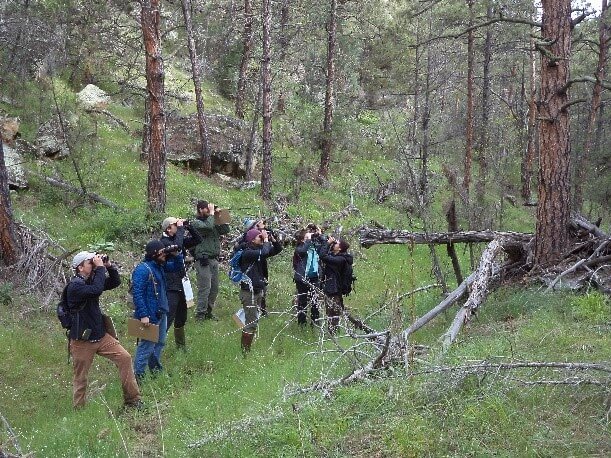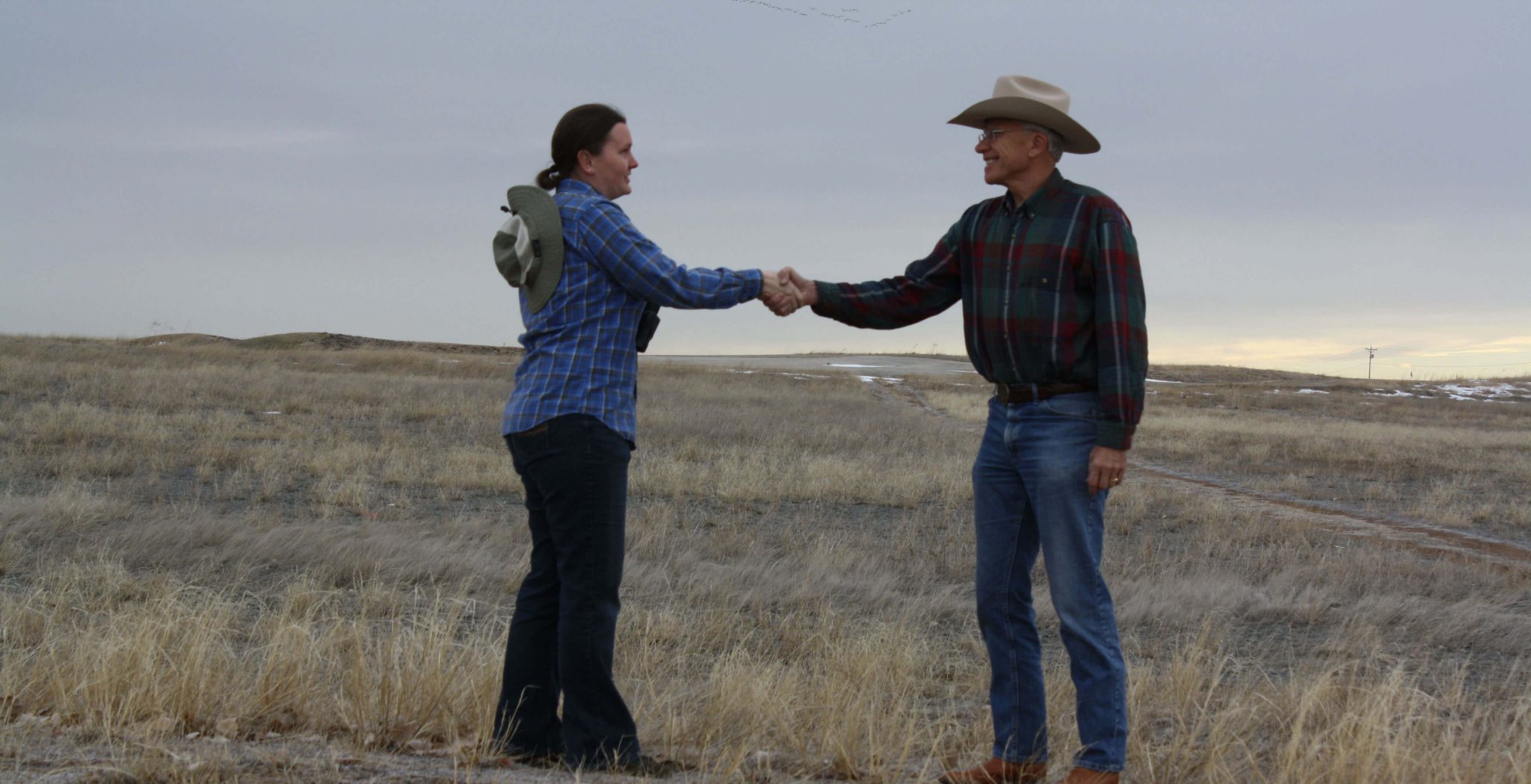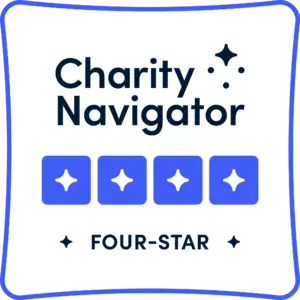Stewardship of Birds on Private Lands
As the days lengthen and temperatures increase, the birds start singing to announce spring—and advertise their availability to potential mates. For biologists with the Integrated Monitoring in Bird Conservation Regions (IMBCR) program, spring also means preparing for a busy field season. They will soon be counting birds across the Great Plains, Rocky Mountains, and Great Basin. More than 100 biologists and technicians conduct breeding landbird surveys every year as part of this program. These happen on both public and private lands—across grasslands, shrublands, forests, and even in densely populated urban areas. Cooperation with private landowners across such a vast area is one unique aspect of the IMBCR program that separates it from most bird monitoring programs.

Connecting with landowners
From late January to March, Jenny Berven (Bird Conservancy’s landowner liaison) leads the effort in sending permission letters to more than 2,000 landowners. Roughly 30% of landowners grant permission for an IMBCR biologist or technician to survey birds on their private land. This response rate is actually quite high for a ‘cold-call’ and it has improved since the early days of IMBCR 11 years ago. Jenny suspects the increase in success rate is because of our contact policies. We honor landowner requests to not be contacted again. We also do not contact landowners that haven’t responded to four years of contact attempts or denied permission two or more times. Once a landowner has granted permission for surveys on their land, they seem more likely to grant permission in subsequent years. This enables Jenny and her staff more time to reach out to landowners who don’t respond by mail. Although she occasionally fields calls or letters from disgruntled landowners, the majority of interactions are pleasant.
“Many people thank us for the work we are doing and absolutely enjoy hearing about what birds we detect on their property.” ~Jenny Berven, Science Program Manager

Following strict rules
Prior to the survey, we contact landowners to confirm the access and ensure all is well. Other rules pertain to etiquette on private land while conducting a survey. This includes staying on designated roads and leaving all gates as found. Under no circumstances are surveys done without permission. Knowingly trespassing is grounds for employee termination. Protecting landowner privacy is of the utmost importance. Landowner information is stored in a secure database—not available to the public—and isolated from bird data before the bird data are shared in an avian database.

Getting an accurate picture
Surveys on private lands allow us to learn about bird populations across the whole landscape, not just on public lands. Mountain Plovers were once a candidate species for federal protection under the Endangered Species Act. However, surveys for the plover had primarily been done on public lands. After a collaborative effort to survey private lands in Colorado and Nebraska, biologists discovered a larger plover population than originally believed. A more accurate population estimate for Mountain Plovers meant that federal protection was not warranted.

A spirit of generosity
Sometimes landowners go well beyond granting permission for surveys. One Nebraska landowner mailed in a personal donation along with the signed permission letter. Another landowner in Colorado left a note on a technician’s windshield inviting her to stop by the house for pancakes after her morning survey. Some considerate landowners also grant access to private roads, making access easier and faster. This makes a big difference when you have 16 points to survey involving creek crossings, steep hills, and fallen logs. In some cases, it can mean completing and not completing the task.
Forming new friendships
IMBCR technician Ethan Kistler surveyed a family ranch in New Mexico and enjoyed eating dinner with the family. He toured their ranch and learned about the family’s history on the land. Ethan was even given a place to sleep when conducting surveys on their property. Veronica Grigaltchik, Private Lands Wildlife Biologist with Bird Conservancy, conducted surveys on private ranches in east-central Montana to understand the impact of ranching practices on wildlife. Her favorite stories involved having coffee with a landowner after a morning bird count. They would listen with interest about what she had observed. She once shared a bird report while on horseback when gathering cows with a rancher. While having dinner with landowners the night before a survey, they joked with Veronica about coming with her—if only it wasn’t such an early start! And one special memory was taking a rancher’s young son with her to “assist” on a survey.

Tangible and intangible benefits
Landowners get some perks for granting permission for bird surveys on their land. This includes a small thank-you gift at the end of the field season—usually a calendar with photos of birds observed during surveys. They also receive a list of all birds detected on or near their property. Perhaps a greater gift is the opportunity to contribute. They are participating in a larger effort to understand bird populations and guide conservation efforts. Ken Bekkedahl in Northwest Colorado has granted access to his property for several years and is pleased with the relationship. He enjoys the bird lists each year, talking to technicians doing surveys on his land, and being part of something greater.
Partners in bird conservation
By voluntarily participating in the IMBCR monitoring effort, private landowners enable us to gather accurate information about bird populations. This guides effective management and conservation, ensuring these birds don’t disappear from the landscape. We are grateful for the support and contributions that landowners are making to realize a future where birds are abundant!







